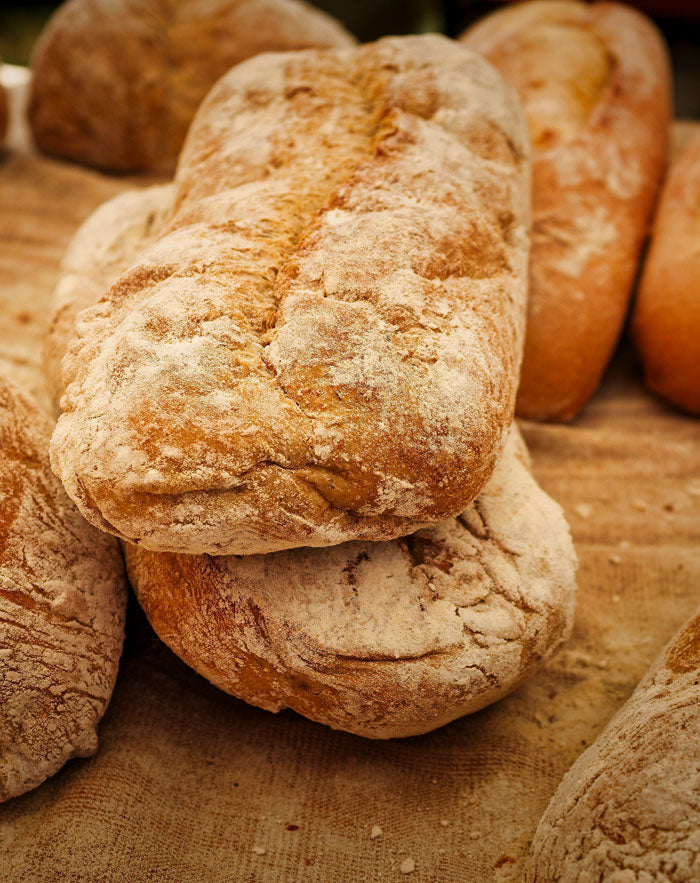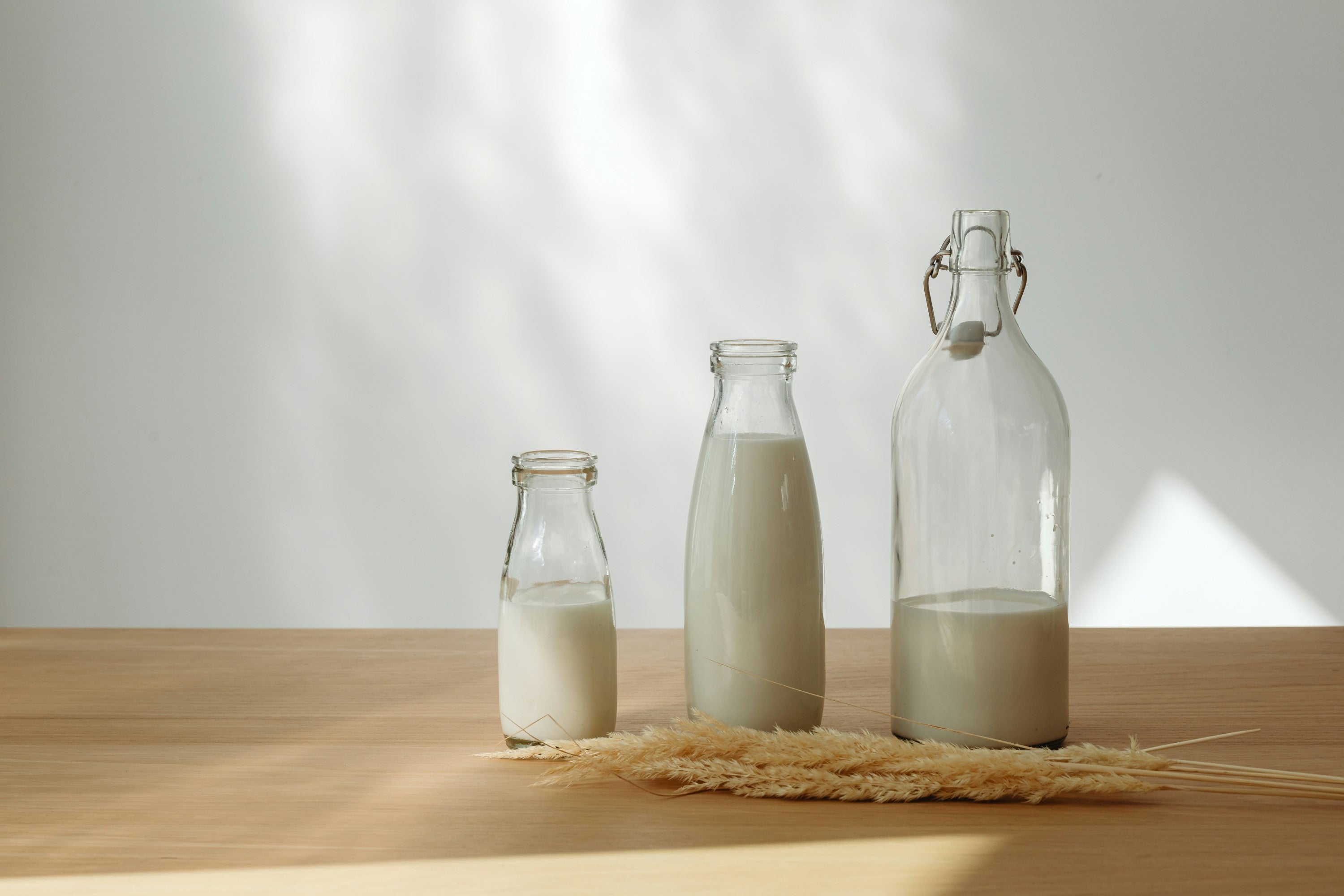Jump to Section
Table of Contents
- What Is Gluten Intolerance?
- Symptoms of Gluten Intolerance
- Gluten Intolerance vs. Celiac Disease vs. Wheat Allergy
- Sources of Gluten
- Common Causes of Gluten Intolerance
- Diagnosing and Testing for Gluten Intolerance
- Managing Gluten Intolerance
- Expert Insights
- Emerging Research and Future Directions
- FAQs
- Conclusion
Gluten Intolerance
Written by:
 Riya Lakhani-Kanji, MSc, ANutr. Last Reviewed 1st January 2025.
Riya Lakhani-Kanji, MSc, ANutr. Last Reviewed 1st January 2025.
Gluten has become a popular topic in the media over the last decade, leading to a lot of conversations about gluten intolerance. With more and more people wondering if gluten might be causing their health issues, it’s important to sift through the information and understand what gluten intolerance really means.
In this article, we’ll break down everything you need to know about gluten intolerance—from what it is and its symptoms to possible solutions and tips for managing it. Whether you think gluten could be impacting your health or just want to learn more, this guide has you covered.
What Is Gluten Intolerance?
Gluten intolerance, also known as non-celiac gluten sensitivity (NCGS), is a condition where people experience a range of uncomfortable symptoms after consuming gluten, a protein found in wheat, barley, and rye.
Unlike celiac disease, which can harm the intestines, or a wheat allergy, which triggers an allergic reaction, gluten intolerance doesn’t cause lasting damage to the body. However, it can still lead to significant discomfort and affect your day-to-day life.
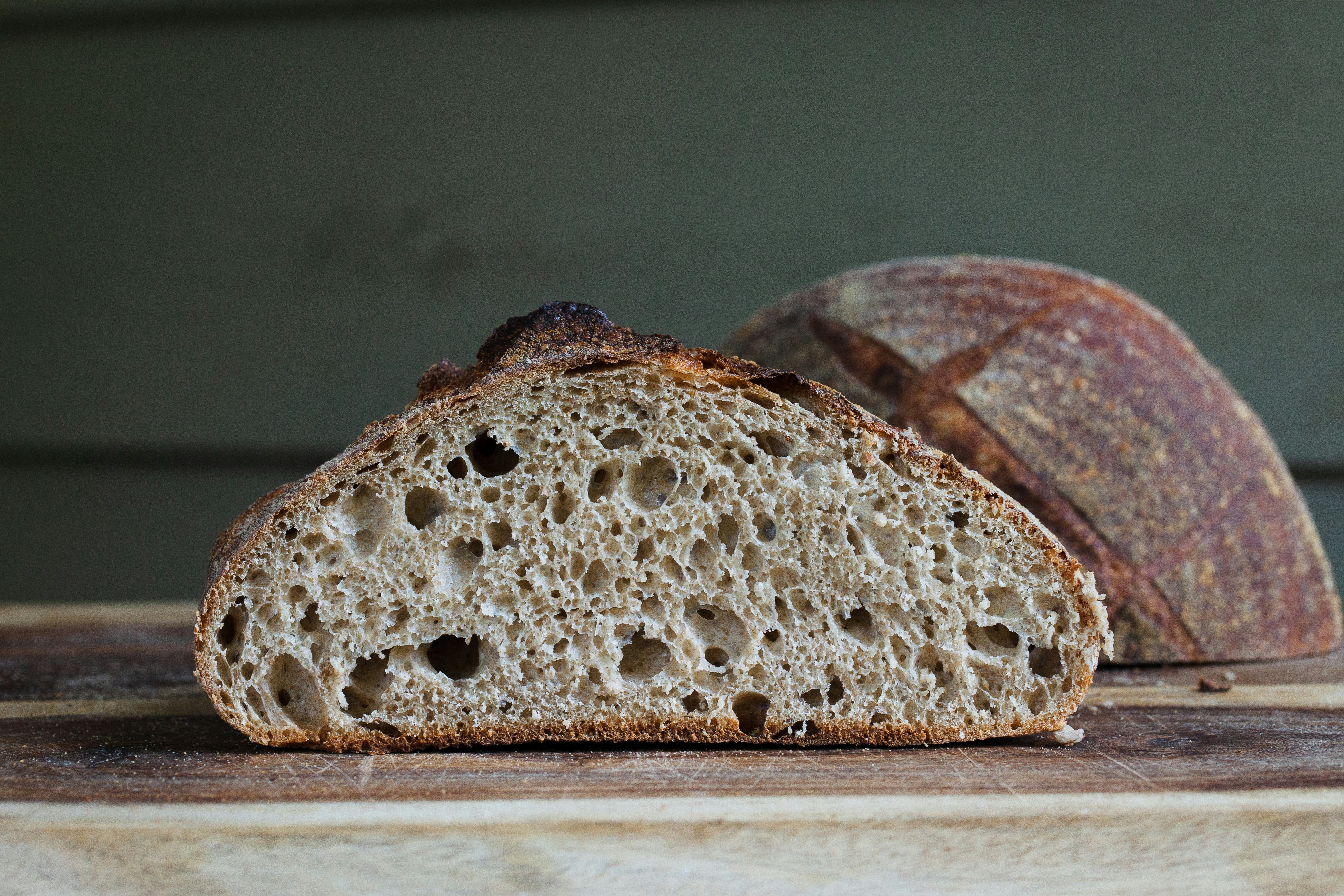
Those with gluten intolerance may experience a mix of symptoms similar to what people with celiac disease or a wheat allergy feel, but without the serious long-term issues associated with these conditions. Common gluten intolerance symptoms include stomach problems like bloating, diarrhoea, constipation, and abdominal pain, as well as fatigue, headaches, and joint pain. These symptoms usually appear after consuming gluten, and their intensity and the symptoms experienced can vary from person to person.
A lot of people may have gluten intolerance without even realising it. It’s hard to know exactly how many people are affected, but estimates say that somewhere between 0.5% and 6% of the population could have it. Interestingly, it seems to be more common in women. So, if you or someone you know regularly feels bloated, tired, or has other strange symptoms after eating foods with gluten, it might be worth looking into!

Understanding Gluten
Gluten is a term used to describe a group of proteins found in certain grains. The most notable of these is wheat, which has several varieties like wheat berry, durum, emmer, semolina, spelt, farina, farro, graham, and einkorn. Gluten is also present in other grains, such as rye, barley, and triticale, which is a hybrid of wheat and rye.
What makes gluten interesting is that it primarily consists of proteins called prolamins, and each grain has its own specific type of prolamin. This unique protein is crucial for the texture of many grain-based foods, as it gives them that soft and chewy feel that a lot of people love. For example, it's what makes bread light and airy, while still having a satisfying chew. Essentially, gluten helps create that desirable texture in foods like pasta, pizza dough, and baked goods.
Because of these properties, gluten is commonly found in a wide variety of food products—from bread and pasta to pastries and cereals. But, gluten doesn't just hide in obvious sources; it can also be found in less apparent products, such as sauces, dressings, processed foods and beer. So, understanding what gluten is and where it lurks is a crucial first step in managing issues like gluten intolerance.

Symptoms of Gluten Intolerance
Gluten intolerance symptoms can show up in a range of different ways and vary quite a bit from one person to another. Generally, we can break these symptoms down into two groups: gastrointestinal and non-gastrointestinal.
Gastrointestinal Symptoms
These symptoms are usually the first ones people notice after consuming gluten. Here’s what you might experience:
Bloating: Many report a feeling of fullness or swelling in the abdominal area, which can be uncomfortable
Diarrhoea: Frequent loose or watery stools can occur, leading to potential dehydration if not managed properly.
Constipation: On the other end of the spectrum, others can find themselves struggling with constipation, making it tough to pass stools and causing quite a bit of discomfort.
Abdominal Pain: Cramping or sharp pains in the stomach that can vary widely in intensity.
Non-Gastrointestinal Symptoms
Interestingly, gluten intolerance doesn’t just interfere with your digestion. You might also notice some unusual symptoms, including:
Headaches: Many individuals report persistent headaches that seem to correlate with gluten consumption.
Joint Pain: Some might feel sore or stiff joints, which can sometimes be confused with arthritis.
Fatigue: You may feel very tired, even if you've had enough sleep, which might be related to gluten.
Skin Issues: Rashes or conditions like eczema may flare up or get better if you stop eating gluten, so it's important to notice any changes.
The tricky thing is that everyone’s body reacts differently to gluten. If you're really sensitive to gluten, you might notice symptoms like bloating or stomach pain almost immediately after eating something with gluten, similar to an allergic reaction. For many others, though, those symptoms can take longer to show up—anywhere from one to twelve hours after eating. Some people might not even notice any issues until days or weeks later. This delay can make it hard to figure out if gluten is the cause of your discomfort. That’s why it's really important to pay attention to how your body feels after you eat. Listening to your body can help you pin down gluten as a potential trigger if you're experiencing symptoms.
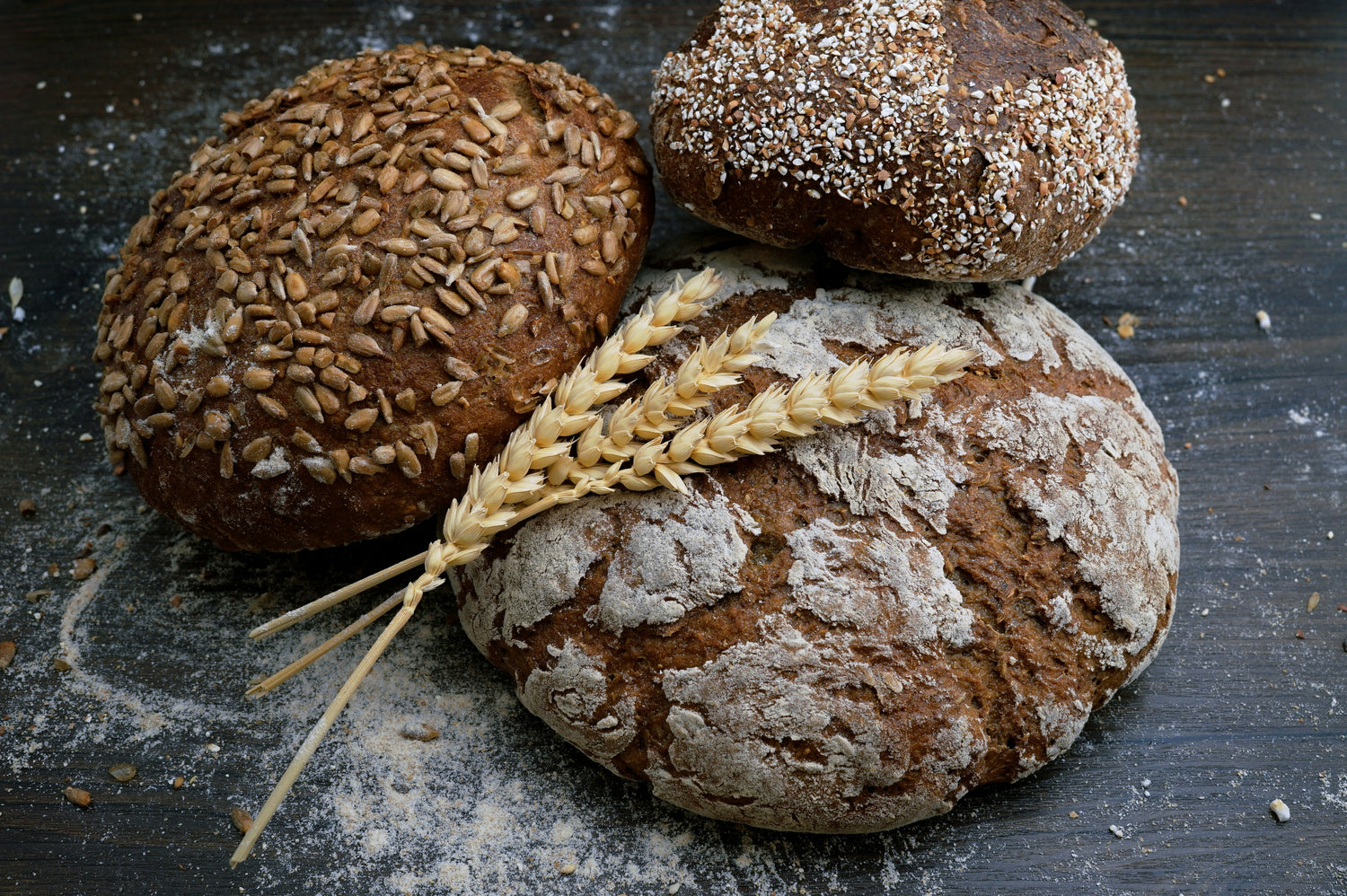
Gluten Intolerance vs. Celiac Disease vs. Wheat Allergy
Celiac disease, wheat allergy, and gluten intolerance (or sensitivity) are three different conditions where the body reacts to proteins found in grains, but they each work in their own way and require different treatments.
Celiac disease is an autoimmune disorder that affects about 1 in 100 people worldwide. This means that when someone with this condition eats gluten, their immune system mistakenly attacks their own small intestine. This damage harms tiny, finger-like structures called villi that line the intestine and help absorb nutrients from food. If the villi are damaged, the body can't take in the important vitamins and minerals it needs. Because of this, people with celiac disease must follow a strict gluten-free diet for life. They cannot eat anything that contains gluten, as even small amounts can cause serious harm to their small intestine.
Wheat allergy is a different issue altogether. It involves an allergic reaction specifically to proteins in wheat. When someone has a wheat allergy, their body mistakenly identifies wheat as a threat. White blood cells, called B-cells, release special antibodies known as immunoglobulin E (IgE) to "attack" the wheat. At the same time, other chemicals in the body are sent out to signal that there’s a problem. This reaction can happen very quickly, within minutes to a few hours, and can cause symptoms like nausea, stomach pain, itchy skin, swelling of the lips and tongue, as well as breathing difficulties or even a life-threatening reaction known as anaphylaxis.
People with a wheat allergy must completely avoid wheat, but they can usually eat gluten from other grains, like rice or corn, without any problems.
Then there’s gluten intolerance or sensitivity. This is when someone has discomfort after eating gluten, but unlike celiac disease, it doesn’t cause damage to the intestines. People with gluten intolerance may experience symptoms like stomach pain or fatigue when they eat gluten, but they usually don’t have to cut it out of their diet entirely. Instead, they can often get away with just reducing the amount of gluten they eat until they feel better.
|
Gluten Intolerance (NCGS) |
Celiac Disease |
Wheat Allergy |
|
|
Causes |
May be linked to genetics, how the immune system responds, or imbalances in the gut bacteria |
An autoimmune condition where the body mistakenly attacks the small intestine when gluten is consumed |
Involves an immediate allergic response to proteins found in wheat, which includes but isn’t limited to gluten |
|
Symptoms |
Common symptoms include digestive problems (like bloating and diarrhoea), headaches, feeling very tired, and joint pain |
Symptoms are often more severe and can include serious digestive issues, difficulty absorbing nutrients, and a skin rash that looks like blisters |
Symptoms can include hives (itchy bumps), swelling in the throat, stuffy or runny nose, and, in some cases, a serious reaction called anaphylaxis |
|
Diagnosis Methods |
Usually diagnosed through an elimination diet, where you cut out gluten for a period, then gradually reintroduce it to see if symptoms return |
Diagnosed using blood tests that check for certain antibodies, and sometimes a biopsy, which involves taking a small sample from the small intestine to look for damage |
Diagnosed through skin-prick tests, which check for allergic reactions, and blood tests that identify specific allergens related to wheat |
|
Treatments |
Gluten-free diet, paying attention to cross-contamination |
Lifetime gluten-free diet, with regular monitoring of health status |
Complete avoidance of wheat products; emergency action plan for anaphylaxis |
Sources of Gluten
In your journey to understand gluten intolerance, it's essential to know where gluten can be found. By identifying the sources of gluten, you can better navigate your dietary choices and avoid potential triggers.
Grains Containing Gluten
These grains should be avoided by those with gluten sensitivities:
- Wheat: This includes hard red wheat, soft red wheat, and durum wheat, which is often used in pasta, as well as kamut and spelt.
- Barley: Commonly used in malt, beer, and some soups.
- Rye: Found in rye bread and some cereals.
- Triticum: Often referred to in more scientific terms, it's a part of the wheat family.
Common Gluten-Containing Foods
- Breads and Baked Goods: Such as bread, rolls, bagels, muffins, cakes, and cookies.
- Pasta: Regular pasta made from wheat.
- Cereals: Many breakfast cereals, especially those with malt.
- Beer: Most beers are brewed from barley, making them a source of gluten.
- Sauces and Condiments: Soy sauce, malt vinegar, and many salad dressings may contain gluten.
- Processed Foods: Packaged snacks and processed foods often use gluten as a thickening agent or filler.
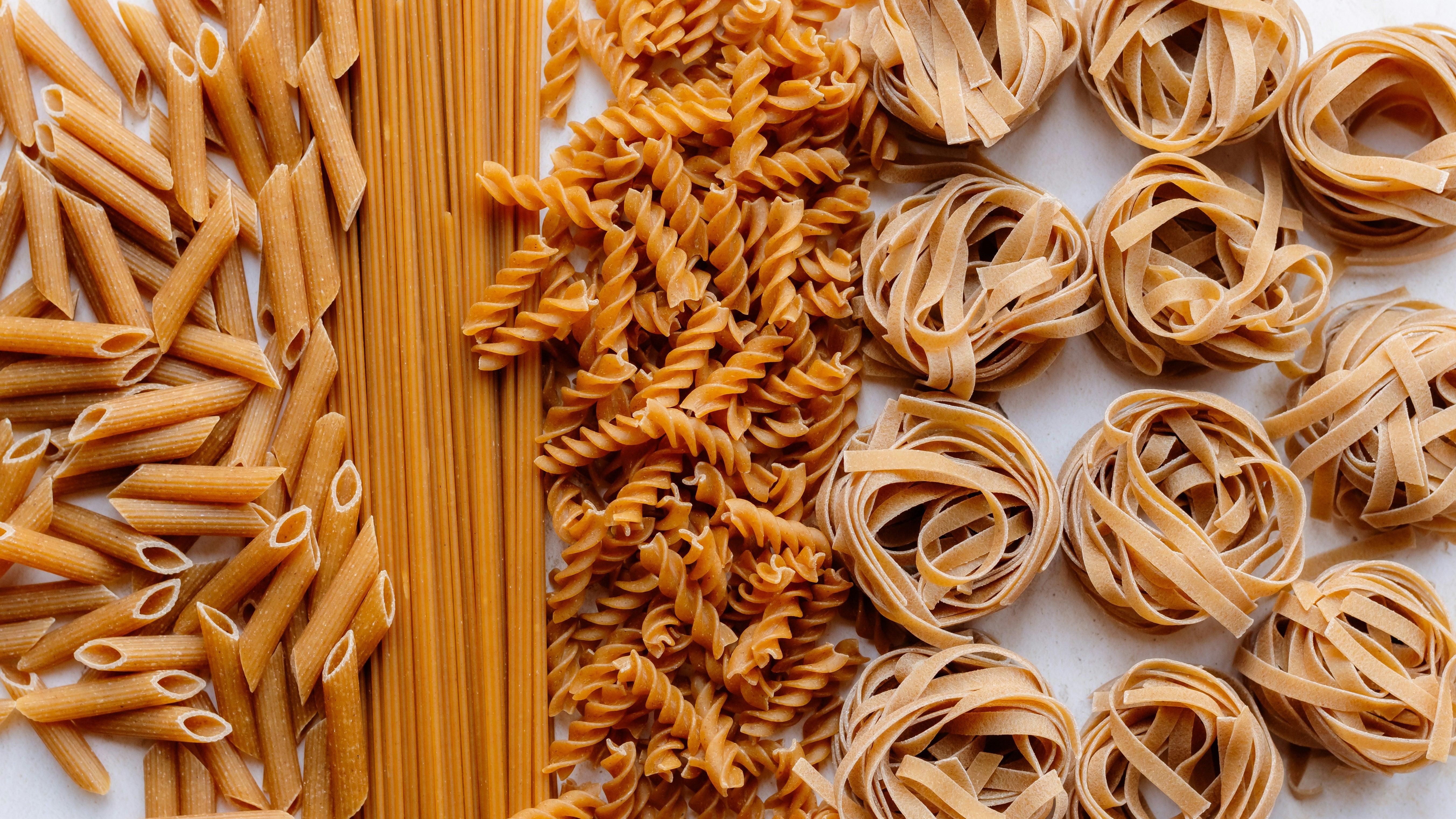
Less Obvious Sources
- Emulsifiers and Stabilisers: Some processed foods include gluten-derived emulsifiers for texture.
- Seasonings and Spice Mixes: Certain blends may contain gluten as an anti-caking agent.
- Imitation Meats: Some meat substitutes might use wheat gluten as a primary ingredient.
- Dietary Supplements: Always check labels, as some vitamins and minerals come in formulations that contain gluten.
Cross-Contamination Concerns
- Restaurants: Shared cooking equipment may expose gluten-free items to gluten.
- Manufacturing Facilities: Foods labelled gluten-free may still be processed alongside gluten-containing products.
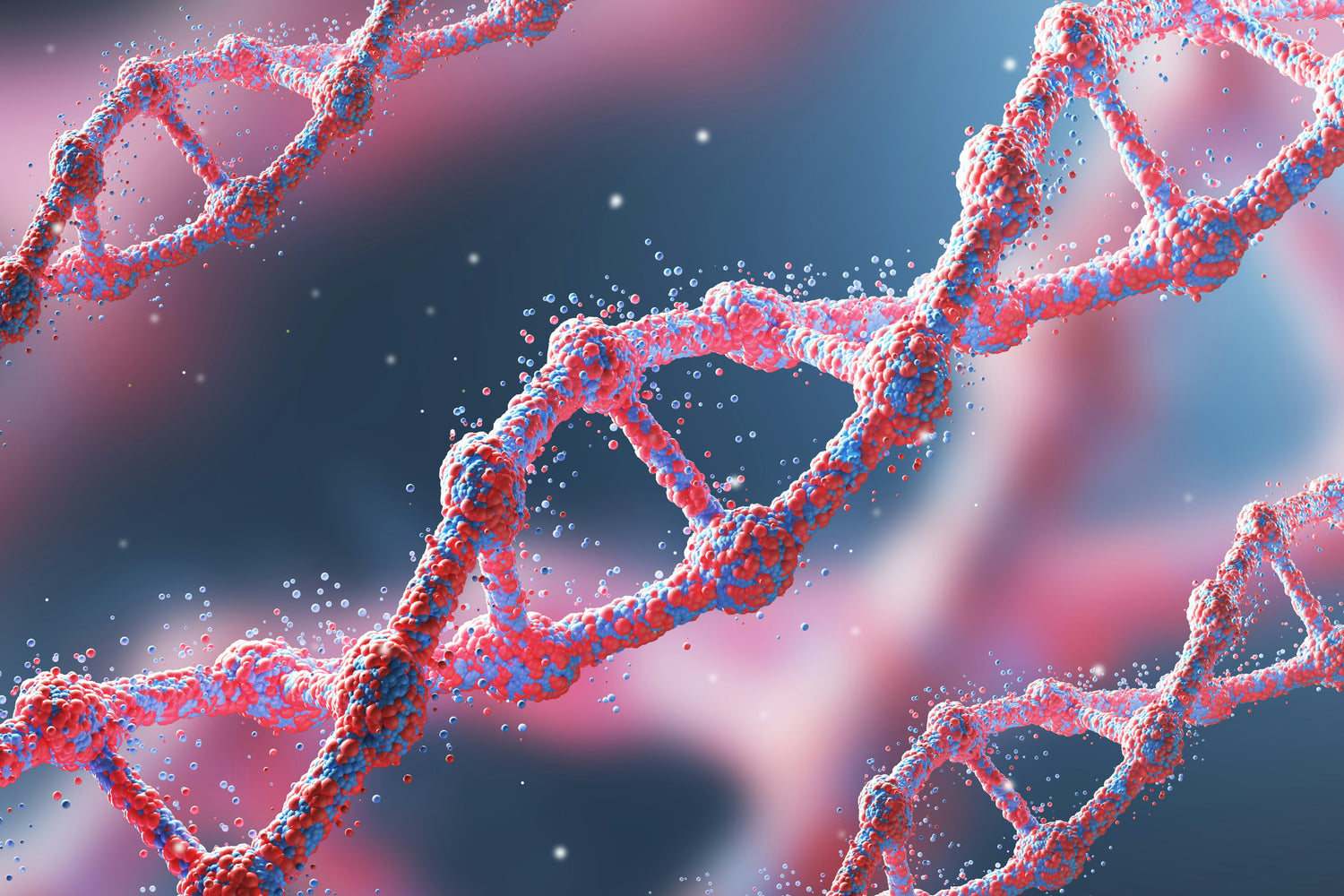
Common Causes of Gluten Intolerance
Understanding gluten intolerance can be complicated, because the exact reasons for it are not completely clear. What we do know is that it is not caused by an autoimmune response like celiac disease or an allergic reaction like a wheat allergy.
Researchers have found a few important factors that may lead to the development of gluten intolerance. In this section, we will look at three key areas that might influence this condition: genetic factors, imbalances in gut bacteria, and how the immune system responds to gluten.
Genetic Predisposition
When it comes to gluten intolerance, your genes can have an influence on whether you're likely to experience it. There are specific genes, known as DQ2 and DQ8, that are often linked to celiac disease, but having these genes doesn’t automatically mean you’ll have celiac disease—you could also develop gluten sensitivity.
In one study, researchers looked at the genes of people with gluten sensitivity and compared them to those with celiac disease. They found that about 56% of people with gluten sensitivity had either the DQ2 or DQ8 genes. This indicates that while these genes are strongly linked to celiac disease, they aren't as critical for developing gluten sensitivity. Even so, these genes were still more frequent in those with gluten sensitivity than in the general population, hinting that they might still play a role we don’t fully understand yet.
Gut Microbiome Imbalances
The gut microbiome is extremely important for our overall health, and when the balance of bacteria in our gut is off, it can really affect how we feel. This is especially true for conditions like celiac disease and non-celiac gluten sensitivity (NCGS), which researchers are studying to see how gut bacteria might differ from person to person.
Most of the research so far has focused on people with celiac disease, but we're just starting to understand the gut bacteria in those with NCGS.
In one study, scientists looked at the gut bacteria of people with NCGS, those with celiac disease, and healthy individuals. They found that most of the bacteria belonged to a group called Firmicutes, while another group, Bacteroidetes, was less common. What was interesting is that a specific family of bacteria called Ruminococcaceae was found in larger amounts in people with NCGS compared to those with celiac disease and healthy people. This hints that some types of bacteria in the gut might play a role in how a person experiences gluten intolerance.
Another important thing to note is that people with NCGS usually have normal gut permeability, meaning their intestines do a good job of filtering what gets absorbed into the body and keeping harmful stuff out. On the other hand, people with celiac disease often have damaged intestines that can’t filter properly. Scientists are still figuring out if the gut function in NCGS patients really differs from healthy individuals. More research is needed to clarify these differences and enhance our understanding of gut health related to gluten intolerance.
Immune System Responses
The immune system plays a key role in how our bodies react to gluten, especially in conditions like celiac disease and NCGS.
In celiac disease, the immune system mistakenly sees gluten as a threat. When someone with celiac disease eats gluten, their immune system goes into action, triggering inflammation that can damage the lining of the small intestine.
On the flip side, people with NCGS don’t have the same intense immune response as those with celiac disease. Their immune systems might still react to gluten, but the reactions are less straightforward, and scientists are still trying to figure out exactly how this works. It seems that in NCGS, the immune system uses different pathways to respond to gluten, which means that while people might experience symptoms, they don’t suffer the same kind of intestinal damage that happens with celiac disease.
Diagnosing and Testing for Gluten Intolerance
Figuring out if you have gluten intolerance isn’t always straightforward, especially because there aren’t specific markers in the blood that can help with the diagnosis, like there are for some other conditions. So, it can feel a bit like a process rather than just a quick test.
The first step usually involves keeping a food diary. This means writing down everything you eat and how you feel afterwards. Look out for any symptoms you might have, like feeling anxious or depressed, developing skin rashes, experiencing joint pain, or having ongoing diarrhoea. By tracking this information, you can start to see if there’s a pattern between your diet and your symptoms.
If you do notice connections between your diet and symptoms, the next step is often a blood test specifically checking for celiac disease. This test is important because celiac disease has unique antibodies in the blood that can help determine if you have it. Knowing whether or not you have celiac disease is vital for managing your diet and health moving forward.
If the blood test rules out celiac disease, but you still have symptoms, your doctor may recommend an elimination diet. This means you completely stop eating gluten and watch for any changes in your symptoms, such as less brain fog. It’s important to do this carefully, often with a phase where you reintroduce gluten under guidance to see if it really is the cause of your issues.
How to Do an Elimination Diet
Starting an elimination diet is an important step if you think you might be gluten intolerant. By removing gluten from your diet, you can see how it affects your body.
First, learn which foods contain gluten. Gluten is found in wheat, barley, and rye, so you'll need to avoid things like bread, pasta, cereals, and many processed foods. Always check food labels for hidden gluten.
Next, plan your meals around gluten-free foods. Focus on fresh fruits, vegetables, lentils, nuts and legumes. You can also use grains that are gluten-free, such as rice, quinoa, and oats, but make sure they are labelled as gluten-free.
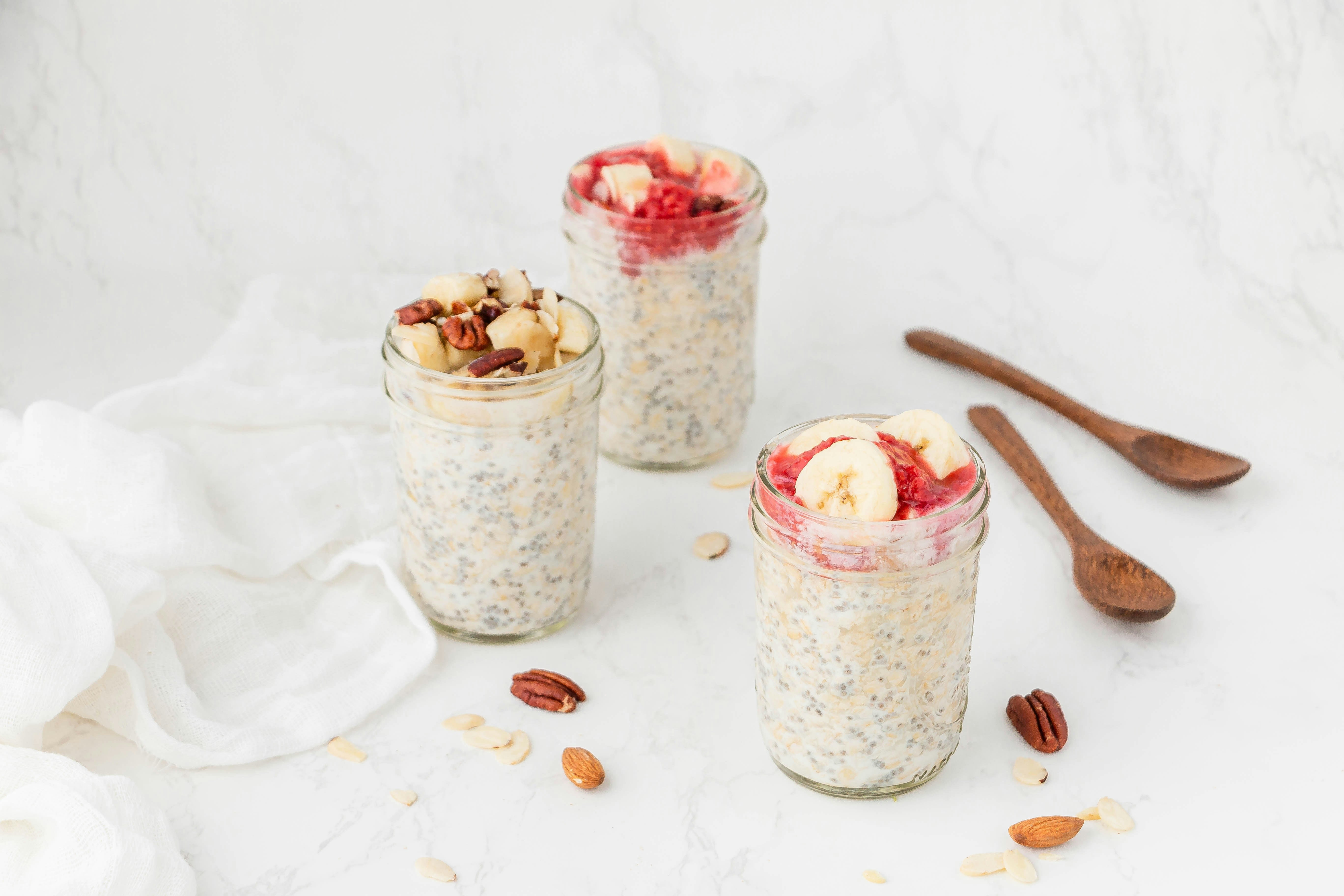
To eliminate gluten, remove all foods that contain it from your diet. You could do this gradually if that feels more manageable. Only buy products that are certified gluten-free to stick to your plan.
Keep track of how you feel each day by writing down any symptoms you notice, like bloating, diarrhoea, joint pain, or skin rashes. It’s also a good idea to include your mood, as feelings of depression or anxiety can be linked to gluten intolerance.
After four weeks without gluten, look back at your notes. Have your symptoms gotten better? Have you noticed improvements, like less brain fog or reduced joint pain? If so, this might suggest that gluten is an issue for you.
If you feel significantly better, you may try reintroducing small amounts of gluten back into your diet while watching for any changes. This can help confirm if gluten is the problem, but it's best to do this carefully and ideally with guidance from a healthcare professional.
Finally, share your observations with your doctor. They can help you better understand your situation and decide if any further tests are necessary. This is especially important to rule out other conditions, such as celiac disease or a wheat allergy.
At Supply Life, we really want to help you get the answers you’re looking for when it comes to food sensitivities. Our food intolerance tests can help you uncover gluten intolerance, in a simple way. We test for the following grains: Barley, Couscous, Durum Wheat, Gliadin, Malt, Oat, Rye, Spelt, Wheat, Wheat Bran, Amaranth, Buckwheat, Corn (Maize), Millet, Quinoa, Rice and Tapioca. With this information, you can easily adjust your meals to fit your personal needs and feel your best.
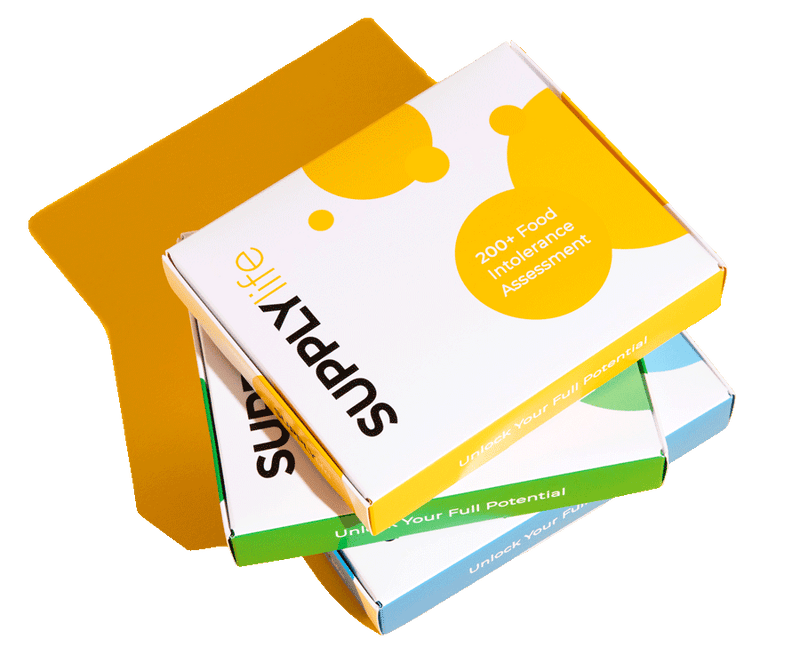
Unlock your full potential today
Get your easy to use food intolerance test today
Managing Gluten Intolerance
Adopting a gluten-free diet may feel overwhelming at first, but with a bit of planning, you can transition smoothly and confidently.
Dietary Changes
One common challenge in going gluten-free is learning to read labels effectively. Start by checking ingredient lists for obvious sources of gluten, like wheat flour and barley malt. Keep in mind that gluten can sometimes hide in unexpected places; even products labelled “gluten-free” may have traces due to cross-contamination. To keep yourself safe, look for certifications from reputable gluten-free organisations.
You also need to be on the lookout for hidden sources of gluten. Ingredients like "malt," "modified food starch," and "hydrolyzed vegetable protein" can come from gluten-containing grains. It might surprise you to find gluten in things like soy sauce, salad dressings, or even some supplements, so always double-check those labels!
Another important tip is to find substitutes for gluten-containing foods. When cooking or baking, try using naturally gluten-free flours, such as almond, coconut, or rice flour. You can also explore naturally gluten-free grains like quinoa, buckwheat, and millet to add variety to your meals.
Meal prepping and planning ahead are also key to maintaining a balanced gluten-free diet. Create a dedicated grocery list of gluten-free items to help you stick to your plan and avoid impulsive purchases that could lead to accidentally eating gluten.
Embracing a gluten-free lifestyle can significantly improve your well-being, especially if you’re gluten-intolerant. By diligently reading labels, uncovering hidden sources, and opting for safe substitutes, you can effectively manage your intolerance while enjoying a wide range of delicious meals.
Gluten Free Alternatives
Transitioning to a gluten-free diet may seem intimidating at first, but with plenty of tasty gluten-free alternatives out there, it can be much easier than you think.
Bread: Instead of your regular loaf, try gluten-free bread made from ingredients like rice flour, almond flour, or potato starch. Brands like Udi's and Schär offer some delicious choices.
Pasta: You can enjoy pasta again with quinoa, rice, or corn-based varieties. Brands like Barilla and Tinkyada specialize in gluten-free pasta that tastes great!
Baked Goods: For muffins, cakes, and cookies, use flour blends that include rice, tapioca, and potato starch. If you prefer buying treats, look for gluten-free bakeries that often use almond or coconut flour for their goodies.
Cereal: Many gluten-free cereals are available made from corn, rice, or quinoa. Cheerios now even have gluten-free versions, making breakfast simple.
Flour: Replace all-purpose flour with gluten-free flour blends, or try single types like buckwheat, sorghum, or chickpea flour for specific recipes.
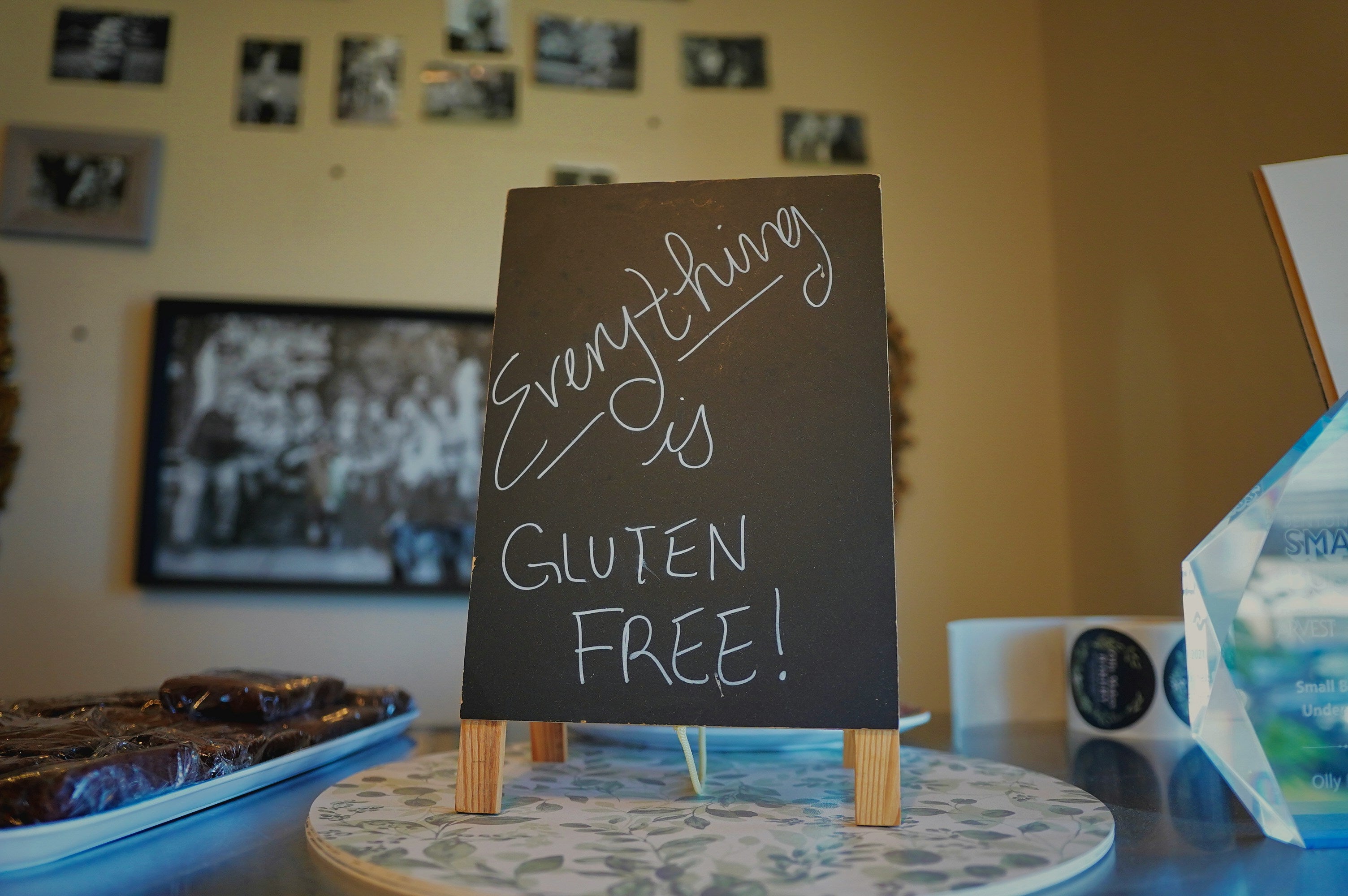
Soy Sauce: Traditional soy sauce contains wheat, but you can use tamari as a gluten-free substitute. Coconut aminos are a great soy-free option, too.
Breading and Coating: For a delicious crunch, use crushed cornflakes, rice crackers, or gluten-free breadcrumbs. Cornmeal and almond flour also make excellent coatings.
Pizza Crust: Many pizzerias now offer gluten-free crusts made from cauliflower, almond flour, or chickpeas. You can even make your own using gluten-free flour mixes!
Snack Foods: Instead of regular crackers and chips, reach for gluten-free pretzels, popcorn, or rice cakes for satisfying snacks.
By incorporating these alternatives into your diet, you’ll not only meet your gluten-free needs, but also discover new flavours and textures you might love. Just remember to read labels carefully when choosing substitutes to ensure they are truly gluten-free!
How to Avoid Cross-Contamination
Living with gluten intolerance can be tricky, especially when you're in shared kitchens or dining out. Here are some simple tips to help you steer clear of gluten exposure:
Avoid Gluten Exposure in Shared Kitchens
1. Use Separate Utensils: Set aside specific cooking tools like cutting boards, pans, and utensils just for your gluten-free meals. Label them clearly to avoid any mix-ups.
2. Smart Storage: Store gluten-free ingredients away from others—preferably on higher shelves or in their own cabinets. This helps keep them free from crumbs or spills.
3. Cleanliness is Key: Always clean kitchen surfaces—like counters, stovetops, and sinks—before making gluten-free dishes. This step is essential to remove any gluten traces from previous cooking.
4. Mind the Double-Dipping: Be cautious with serving utensils and condiment containers. Make sure they haven’t been in contact with gluten-containing foods.
5. Invest in Separate Appliances: If you can, get dedicated appliances—like toasters or mixers—just for gluten-free cooking to prevent gluten remnants from earlier meals.
Dining Out Safely
1. Communicate: When you’re at a restaurant, don’t hesitate to inform the staff about your gluten intolerance. Ask specific questions about how meals are prepared, and check for any risk of cross-contact.
2. Choose Gluten-Free-Friendly Spots: Opt for restaurants that offer gluten-free menus or have a good reputation for avoiding cross-contamination. Reviews from other gluten-free diners can guide you in the right direction.
While preventing cross-contamination may seem daunting, with a little planning and clear communication, you can enjoy your meals with peace of mind.
Expert Insights
 Starting a gluten-free diet can feel overwhelming, almost like walking through a maze. One surprise you might encounter is the potential for nutrient deficiencies. When you eliminate gluten, you also cut out many grains that are packed with dietary fibre. While avoiding gluten is crucial for your health, you might find yourself missing out on the feeling of fullness and the digestive benefits that fibre offers.
Starting a gluten-free diet can feel overwhelming, almost like walking through a maze. One surprise you might encounter is the potential for nutrient deficiencies. When you eliminate gluten, you also cut out many grains that are packed with dietary fibre. While avoiding gluten is crucial for your health, you might find yourself missing out on the feeling of fullness and the digestive benefits that fibre offers.
But that's not all; many gluten-free products are made from starches and refined flours, which often don’t provide the essential micronutrients typically found in gluten-containing products. This means you’ll need to pay extra attention to your intake of important vitamins and minerals. Some nutrients that could be at risk include Vitamin D, which supports bone health; Vitamin B12, important for nerve function and energy; and folate, a key B vitamin for cell growth.
Additionally, minerals such as iron, zinc, magnesium, and calcium can be harder to get without careful meal planning. Iron helps prevent anaemia, zinc boosts your immune system, magnesium is necessary for muscle and nerve function, and calcium is vital for strong bones and teeth.
The good news? With some creativity and nutritional awareness, you can create a balanced diet. Try adding gluten-free whole grains like quinoa, buckwheat and brown rice, along with a variety of fruits, vegetables, nuts, and seeds to your meals. This will help you cover your nutrient bases. Supplements might also be a good option to fill any nutritional gaps, but it’s best to consult with a healthcare professional to customise them for your needs. Navigating these dietary changes may take some effort, but with the right strategies, you can thrive on a nutritious, gluten-free lifestyle!
— Riya Lakhani-Kanji BSc, MSc
Emerging Research and Future Directions
Recent studies are changing how we think about non-celiac gluten sensitivity. It looks like gluten might not be the main cause of the symptoms that many people report. Instead, new findings suggest that FODMAPs—carbohydrates that are hard to digest—could be the real issue. Grains like wheat, barley, and rye, which contain gluten, are also high in FODMAPs. This means that the problems some people face might come from FODMAPs rather than gluten itself. Researchers are currently focusing on this idea to better understand how FODMAPs relate to gluten sensitivity.
Studies from places like Columbia University are also helping to differentiate between celiac disease and non-celiac gluten sensitivity. Many people who have symptoms similar to celiac disease but test negative often choose to follow a gluten-free diet and are labelled as gluten-sensitive.
But, the research reveals that people with gluten sensitivity may in fact produce different antibodies to gluten compared to those with celiac disease, who have specific blood markers and damage to their intestines.
Scientists are working hard to find reliable tests that can help accurately diagnose gluten sensitivity. Right now, many testing methods are unclear, leaving some people unsure of their condition. By studying how the immune systems of gluten-sensitive individuals respond, researchers hope to identify helpful markers, which could lead to better treatments and help differentiate gluten sensitivity from celiac disease.
Looking ahead, the management of gluten intolerance is becoming increasingly promising with the development of new treatment options. One of the most exciting areas is the use of enzyme supplements. These supplements aim to break down gluten proteins, specifically the small fragments that many people struggle to digest and that can trigger symptoms.
Researchers are particularly focused on prolyl endopeptidases, enzymes that effectively break down gluten. Initial studies suggest that these enzymes could be formulated into supplements for use before or during meals containing gluten. But, it's important to note that these enzyme supplements are not a replacement for a gluten-free diet; they are more like tools to help reduce the chance of accidentally eating gluten.
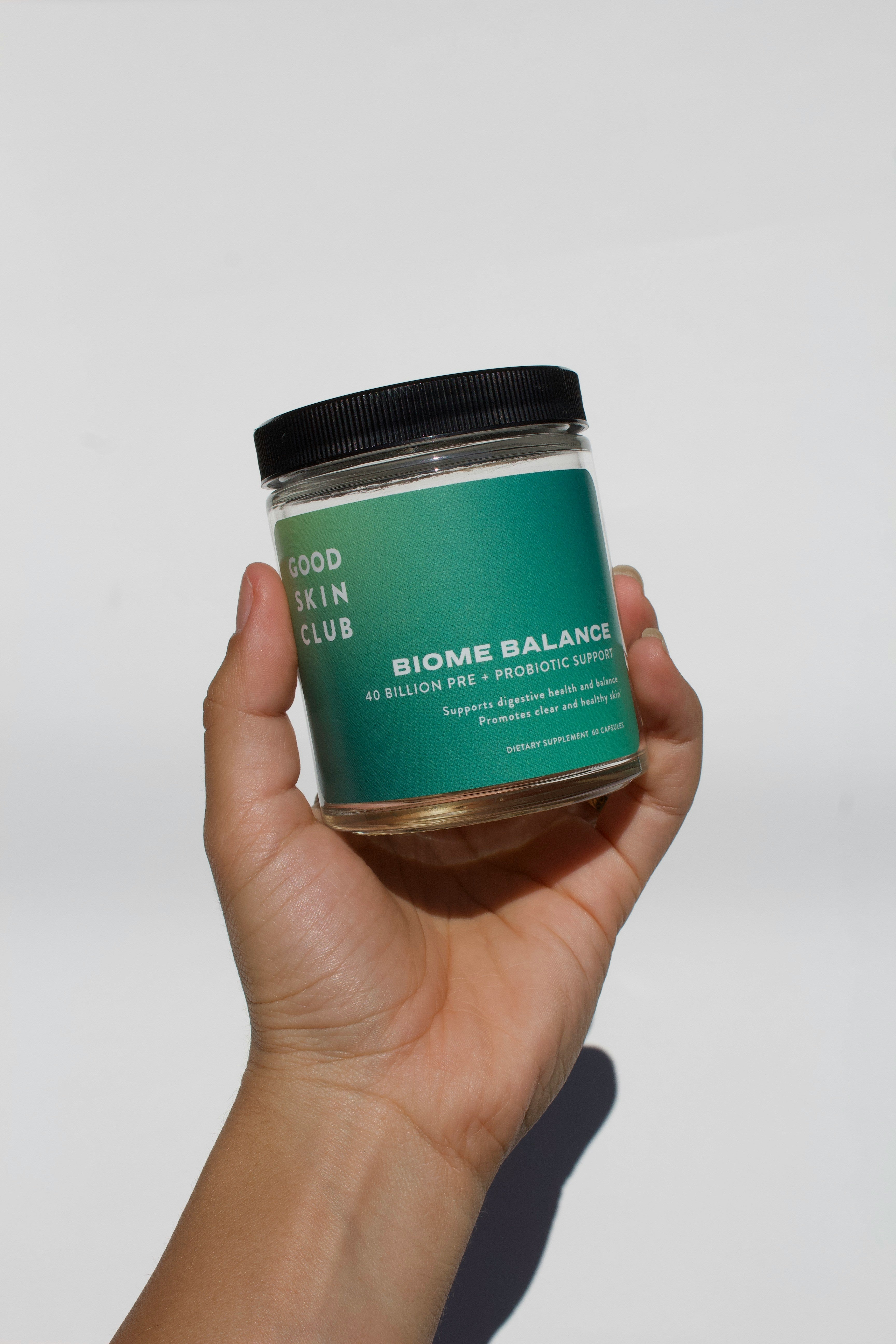
In addition to enzyme supplements, other therapies are being investigated. Some aim to modify the immune system’s response to gluten. For example, ongoing clinical trials are exploring the potential of probiotics to enhance gut health and change how the immune system reacts to gluten. Researchers are also studying vaccines that could help the immune system tolerate gluten without triggering negative effects.
These promising new treatments could significantly change how gluten intolerance is managed, making life more manageable for those who struggle to maintain a strict gluten-free lifestyle. While these therapies are still under investigation and require further validation, they represent an exciting future for improving the quality of life for individuals with gluten intolerance.
Customer Story
In the journey of managing gluten intolerance, many individuals face confusion about what foods are suitable for them. Sarah Walsh is one such person who had been struggling with food intolerances for years. In her Trustpilot review, she shared her experience, stating, "I have been so uncomfortable for many years now not knowing what’s best to eat because my stomach reacts terribly to food."
Despite already removing gluten and lactose from her diet, Sarah still faced significant challenges. Turning to Supply Life, she hoped for guidance on what to cut out next. Her expectations were not just met but exceeded: "Supply Life has been amazing, a complete life changer."
After following the recommendations from her test results, Sarah reported a remarkable improvement in her condition. She noted, "Since cutting specific foods/ingredients out of my diet I do not experience the bloating and discomfort anywhere near like I used to." This newfound clarity allowed her to find suitable alternatives that kept her feeling full and nourished.
Furthermore, Sarah mentioned a broader sense of well-being: "I feel much better in myself too." Her gratitude shines through as she concludes, "Really glad I had the test done, thank you."
Frequently Asked Questions (FAQs)
Is gluten intolerance the same as celiac disease?
No, gluten intolerance is not the same as celiac disease. Both conditions make you feel unwell after eating gluten, but they are different. Celiac disease is an autoimmune disorder, which means that eating gluten can harm your small intestine and lead to serious health problems. On the other hand, gluten intolerance doesn’t cause this kind of damage to the intestine. While symptoms like bloating and fatigue can occur in both conditions, the reasons behind them and their potential effects on health are quite different.
Can gluten intolerance go away over time?
For some people, gluten intolerance can improve with time, especially if they make changes to their diet and lifestyle. However, this isn’t the case for everyone. Some individuals may continue to experience symptoms even after trying to avoid gluten for a while. It's important to listen to your body and have a chat with a healthcare professional or dietician for guidance on managing symptoms.
Are oats safe for people with gluten intolerance?
Pure oats are gluten-free and generally safe for most people with gluten intolerance. However, oats can sometimes get contaminated with gluten because they might be processed in the same facilities as grains like wheat, rye, and barley, which do contain gluten. To be safe, it's best to choose oats that are specifically labelled as certified gluten-free. This way, you can avoid any risk of contamination.
Can gluten intolerance develop after pregnancy or illness?
Yes, gluten intolerance can develop after pregnancy or an illness. Some women notice symptoms after having a baby, likely because of changes in their body. Also, getting sick or having an infection can sometimes lead to gluten sensitivity in people who didn’t have problems with gluten before.
Can gluten intolerance cause weight gain?
Yes, gluten intolerance can lead to weight gain for some people. When someone with gluten sensitivity eats gluten, it can cause inflammation in their body. This inflammation might make them retain water and feel bloated. It can also disrupt gut health, which affects how well the body digests food and absorbs nutrients.
Because of ongoing discomfort and digestive problems, some people may have changes in their appetite or cravings, which can result in fluctuating weight.
Is an allergy to wheat similar to a gluten intolerance?
No, they’re not the same. A wheat allergy is when your immune system reacts to proteins in wheat, and it can cause serious health issues. Gluten intolerance means your body has trouble digesting gluten, which is a protein found in wheat, barley, and rye. The symptoms from both can seem similar, but gluten intolerance usually doesn’t cause the severe reactions that a wheat allergy can.
Conclusion
As we wrap up this guide, it’s important to highlight the importance of understanding gluten intolerance, especially for those who experience symptoms like bloating, stomach discomfort, headaches, and fatigue after eating gluten. It’s essential to differentiate gluten intolerance from similar conditions such as celiac disease and wheat allergy. A thorough medical evaluation is key to getting an accurate diagnosis and creating an effective management plan.
Managing gluten intolerance mainly revolves around following a gluten-free diet. This means being diligent about reading food labels and being cautious about cross-contamination, particularly when dining out or sharing meals with others. Thankfully, by embracing gluten-free alternatives and ensuring a balanced diet, you can still enjoy a wide variety of foods without compromising your health.
It's also vital to stay informed about gluten intolerance and keep up with the latest research. Knowledge is power, and it enables those who are affected to make informed health decisions. Although living with gluten intolerance can present challenges, support from healthcare providers and nutritionists can help ease symptoms and improve day-to-day well-being.
As you consider your next steps, have you thought about trying a food intolerance test from SupplyLife?

Unlock your full potential today
Get your easy to use food intolerance test today
This could help you identify sensitivities to gluten that you may not have been aware of, allowing you to fine-tune your diet in a way that truly works for your body. With the right insights, you’ll feel more confident in managing your symptoms and making choices that work best for you!

Written by: Riya Lakhani-Kanji, MSc, ANutr
Riya is a certified nutritionist with a passion for plant-based nutrition. Holding both a bachelor's and a master’s degree in nutrition, she skillfully blends her expertise with her writing to create insightful and engaging content focused on health and wellness.
Sources
Celiac disease. (2023). https://www.mayoclinic.org/diseases-conditions/celiac-disease/symptoms-causes/syc-20352220#:~:text=If%20you%20have%20celiac%20disease,nutrients%2C%20a%20condition%20called%20malabsorption.
Celiac disease. (n.d.). https://www.hopkinsmedicine.org/health/conditions-and-diseases/celiac-disease
Coeliac disease. (n.d.). https://www.nhs.uk/conditions/coeliac-disease/
Divergence of gut permeability and mucosal immune gene expression in two gluten-associated conditions: celiac disease and gluten sensitivity. BMC Medicine. (2011). https://bmcmedicine.biomedcentral.com/articles/10.1186/1741-7015-9-23
Do you need specific genes to have gluten sensitivity? (2024). https://www.verywellhealth.com/gluten-sensitivity-genes-562967
First insights into the gut microbiota of Mexican patients with celiac disease and non-celiac gluten sensitivity. Nutrients. (2018). https://pmc.ncbi.nlm.nih.gov/articles/PMC6266755/
Gluten: A benefit or harm to the body? (n.d.). https://nutritionsource.hsph.harvard.edu/gluten/#:~:text=Gluten%20is%20a%20protein%20naturally,the%20dough%20would%20rip%20easily.
Gluten immunogenic peptides as standard for the evaluation of potential harmful prolamin content in food and human specimen. Nutrients. (2018). https://pmc.ncbi.nlm.nih.gov/articles/PMC6316305/#:~:text=Prolamins%20are%20the%20main%20components,celiac%20and%20gluten%2Dsensitive%20patients.
Gluten sensitivity: research areas. (n.d.). https://www.beyondceliac.org/celiac-disease/non-celiac-gluten-sensitivity/research/#:~:text=New%20research%20suggests%20that%20gluten,cause%20of%20the%20symptoms%20instead.
Gluten sensitivity FAQ. (n.d.). https://www.beyondceliac.org/celiac-disease/non-celiac-gluten-sensitivity/faq/
Gluten sensitivity symptoms. (2022). https://www.verywellhealth.com/gluten-sensitivity-symptoms-562962
How long after eating gluten do symptoms start? (n.d.). https://www.schaer.com/en-us/a/how-long-after-eating-gluten-do-symptoms-start#:~:text=While%20allergy%20symptoms%20typically%20develop,celiac%20disease%20and%20gluten%20sensitivity.
New research may lead to a test for gluten sensitivity. (2020). https://www.beyondceliac.org/research-news/test-gluten-sensitivity/
Non coeliac gluten sensitivity – A new disease with gluten intolerance. Clinical Nutrition. (2014). https://www.sciencedirect.com/science/article/pii/S0261561414002180
Non-celiac gluten sensitivity: Clinical presentation, etiology and differential diagnosis. Gastroenterología y Hepatología. (2023). https://www.sciencedirect.com/science/article/abs/pii/S2444382423001244
Non-celiac gluten sensitivity shows distinct immune response. (n.d.). https://celiac.org/non-celiac-gluten-sensitivity-shows-distinct-immune-response/
Probiotics and prebiotics for patients with celiac disease and non-celiac gluten sensitivity. (2023). https://docs.bvsalud.org/biblioref/2023/07/1442697/probiotics-prebiotics.pdf#:~:text=The%20use%20of%20probiotics%20and%20prebiotics%20to%20treat%20CD%20and,control%20of%20the%20inflammatory%20processes
Subclass profile of IgG antibody response to gluten differentiates nonceliac gluten sensitivity from celiac disease. Gastroenterology. (2020). https://www.gastrojournal.org/article/S0016-5085(20)34992-1/pdf?referrer=https%3A%2F%2Fpubmed.ncbi.nlm.nih.gov%2F32702369%2F
Unraveling the allosteric mechanisms of prolyl endopeptidases for celiac disease therapy: Insights from molecular dynamics simulations. International Journal of Biological Macromolecules. (2024). https://www.sciencedirect.com/science/article/abs/pii/S0141813024001168#:~:text=Prolyl%20endopeptidases%20(PEP)%20from%20Sphingomonas,with%20their%20substrates%20remain%20unclear.
US perspective on gluten-related diseases. Clinical and experiemental gastroenterology. (2014). https://pmc.ncbi.nlm.nih.gov/articles/PMC3908912/
What is celiac disease? (n.d.). https://celiac.org/about-celiac-disease/what-is-celiac-disease/
Wheat allergy. (n.d.). https://www.foodallergy.org/living-food-allergies/food-allergy-essentials/common-allergens/wheat
Wheat allergy. (2022). https://my.clevelandclinic.org/health/diseases/17717-wheat-allergy


